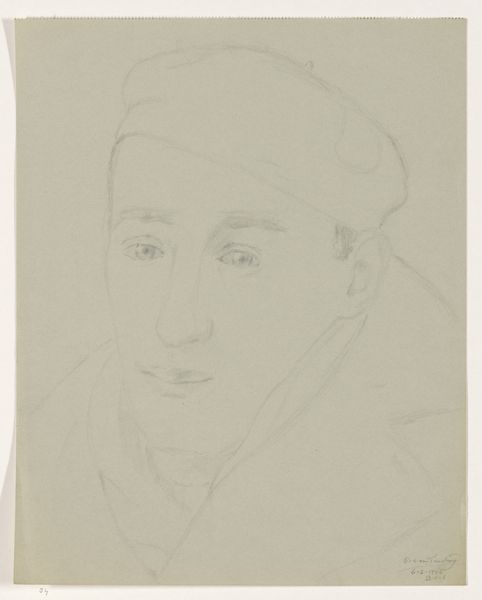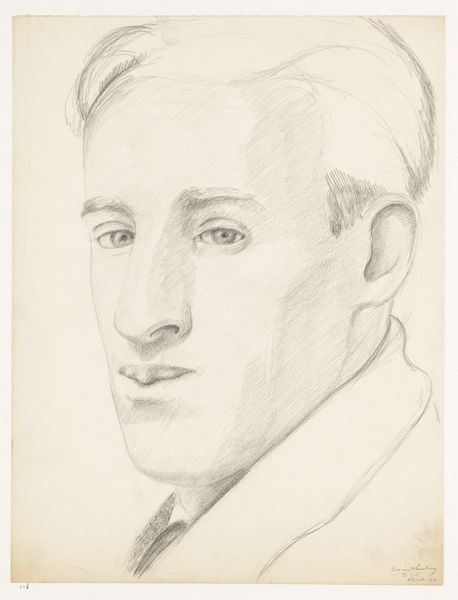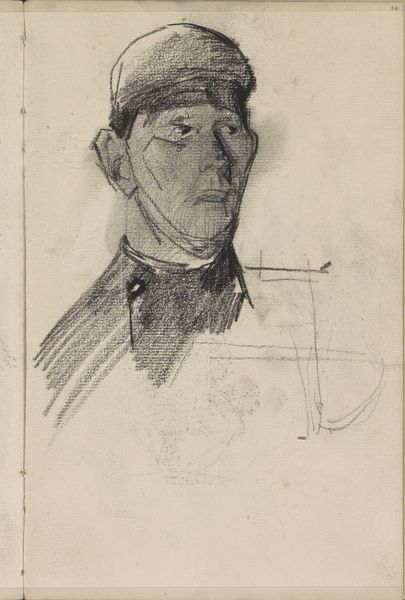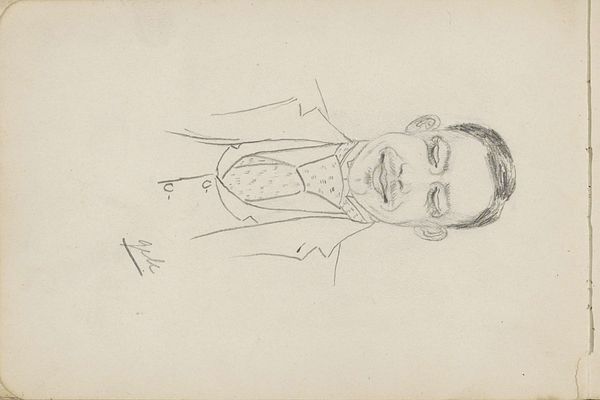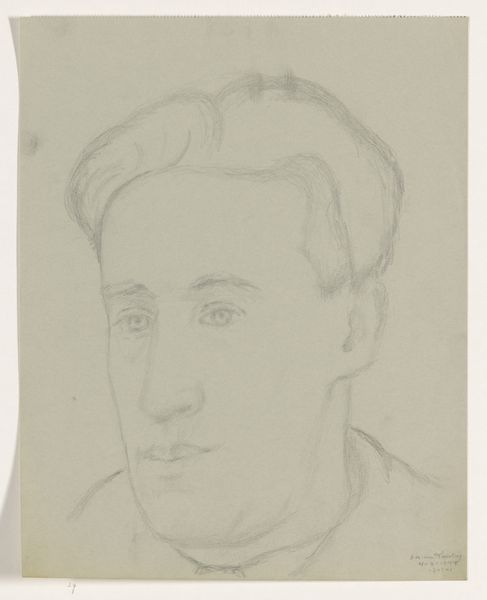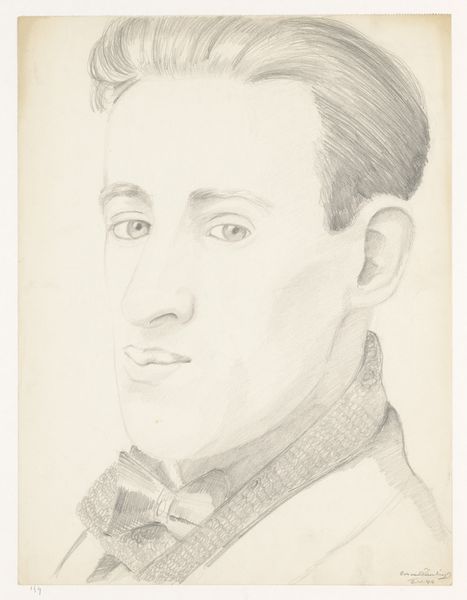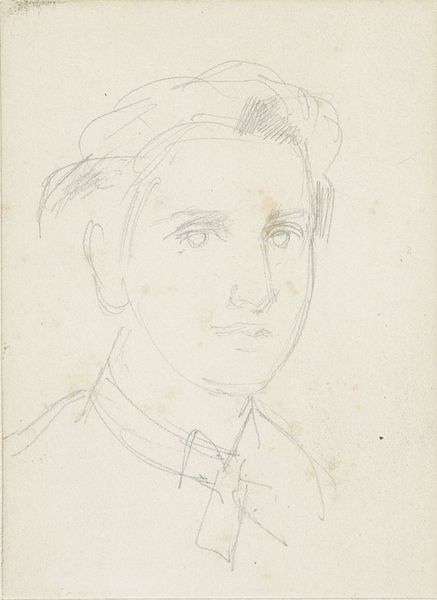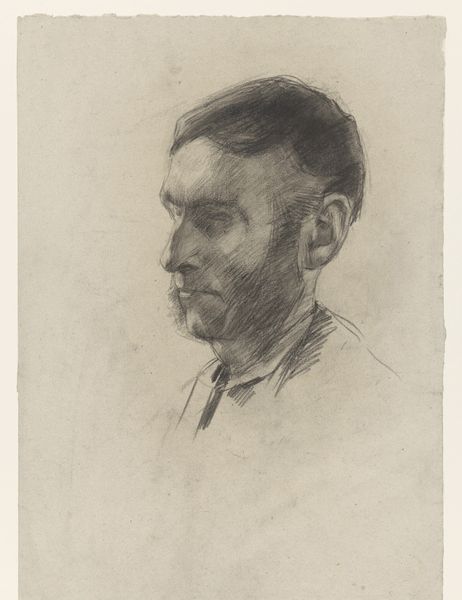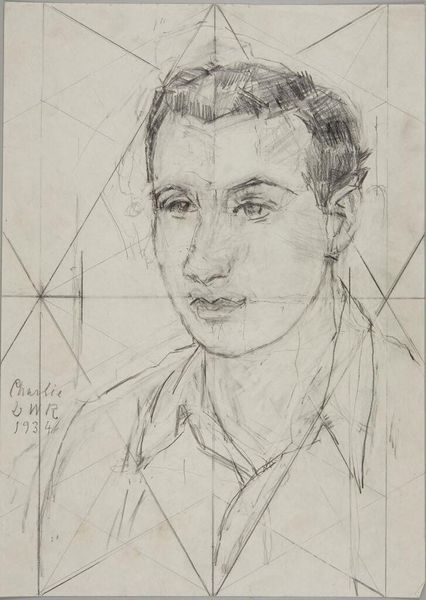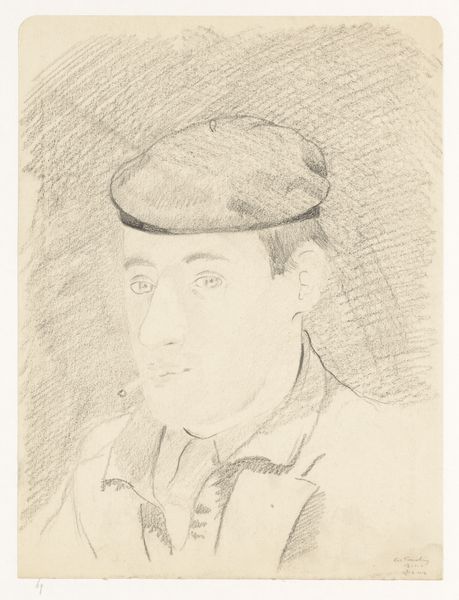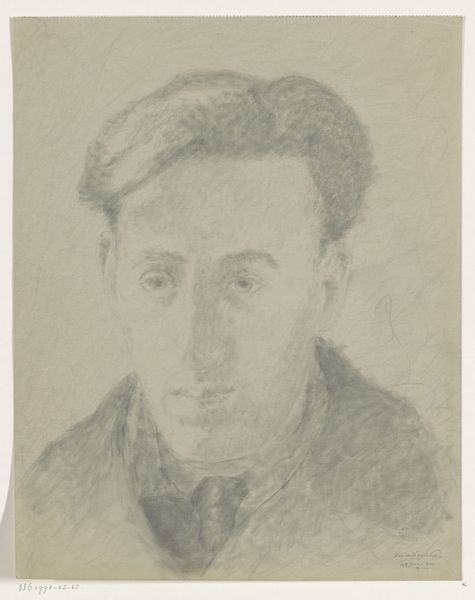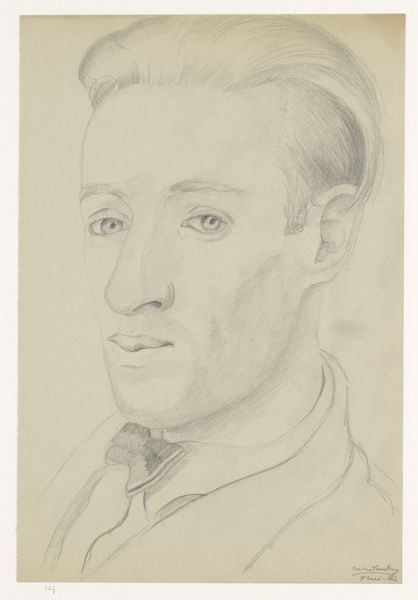
drawing, pencil
#
portrait
#
drawing
#
pencil sketch
#
figuration
#
sketch
#
pencil
#
modernism
#
realism
Copyright: Lucian Freud,Fair Use
Editor: So, this is Lucian Freud’s "Head of Boy with a Book" from 1944, a pencil drawing. It feels very austere to me, almost melancholic, and so precise. What do you see in this portrait? Curator: What strikes me is the timing: 1944. This wasn’t just any year; it was the height of World War II. Consider the social context, the widespread anxiety, and the disrupted lives. This drawing is not a flattering depiction of youthful exuberance; it shows us an intellectual seriousness bordering on worry. Notice how Freud uses stark realism, diverging from the more romantic portraits of the time. He seems interested in the psychological state of this young man. Editor: Do you think that feeling of anxiety was a conscious choice? Curator: It's hard to say definitively. Artists respond to their environment in complex ways, but Freud lived through this. Think about Freud's biography as well – he was an émigré from Germany, his family fleeing Nazi persecution in the 1930s. This personal history surely shaped his artistic vision and perhaps pushed him to portray the realities, however somber, that surrounded him and his subjects. He is creating an authentic view that counters traditional and idealized notions of boyhood, challenging existing notions of portraiture. Editor: So it’s not just a portrait; it's a statement. How would a viewer in 1944 have perceived this work compared to now, do you think? Curator: Then, this piece might have felt unsettling, a challenge to patriotic depictions. Now, with historical context, it gains layers of meaning. We see the echoes of war, the weight of intellect, the personal narrative of displacement. It becomes a vital document, not just of art, but of social history. Editor: It is a real privilege to experience artwork that prompts us to consider not only artistic skill but broader historical factors as well. Curator: Indeed, this portrait is not simply a static depiction of a boy. It actively communicates something about both then and now.
Comments
No comments
Be the first to comment and join the conversation on the ultimate creative platform.

